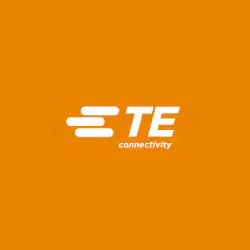The Convergence of Wireless Networks for the IoT
| 18-06-2015 | By John Spindler
TE Connectivity’s John Spindler discusses the likely network model for the globally integrated Internet of Things.
With the Internet of Things (IoT) projected to connect between 25 and 80 billion devices by the year 2020, mobile operators must re-examine their business models and decide how they can profitably provide connectivity in this new world. Fundamentally, mobile operators must shift from connecting only people to connecting things; but with business models built on having people pay for connectivity and access to information, adjustments will be needed in economics and who owns, controls and manages mobile network assets and data.
Network access means network ubiquity
The first requirement for networking the IoT is that the network must be available everywhere. While networks using cell towers and fibre optics may be fine for reaching customers at home, on the street, or in automobiles on highways, they may not be able to connect to a soda machine in the basement break room of a building, or a gate sensor in an underground parking structure. As a result, the emergence of the IoT will accelerate the trend toward supplementing the macro cellular network infrastructure with in-building networks (both licensed and Wi-Fi) using distributed antenna systems (DAS), small cells, and Wi-Fi access points.
Networking the IoT will also require convergence of mobile and Wi-Fi networks because some “things” will connect via the mobile network, and others will connect via Wi-Fi. The most logical scenario is that both types of networks be managed by a single entity so that “the network” looks like a unified architecture serving multiple communication needs.
Controlling the converged network
If the IoT will require a converged and ubiquitous network, the question arises: who will control and maintain this network? Mobile operators don’t have the expertise or business plan to take on management of such a network, so we will likely see these networks controlled by third parties. These third parties, much like regional fibre providers or the neutral host operators we see for mobile networks in today’s stadiums and other large venues, will handle billing for services provided by several mobile operators as well as maintenance of the unlicensed parts of the network. Third parties will manage and service the networks in office buildings, transportation hubs, stadiums, hotels, hospitals and other venues.
For mobile operators, ceding operational control to neutral host operators unburdens their technical staffs and reduces operational expenditures. In these cases, the mobile operator simply provides access to its network for a share of the revenues from the IoT network.
Economic models
As with human subscribers, IoT network operators will have to find ways to charge for connecting things. For example, the owner of a network of soda machines could be charged by the amount of bandwidth those machines consume. There may be multiple revenue plans: a) a nominal connectivity fee followed by payment for actual usage; b) a lump-sum payment per month, quarter, or year; c) payment for actual usage only. Usage-based pricing is taking over as the dominant model for mobile operator networks because it better monetises the network assets, and it will likely be the main model for the IoT.
Usage-based charging will require network operators to deploy metering equipment to determine, on a per-thing basis, how much bandwidth is being used. Sophisticated network management systems and even physical layer management systems will be necessary to understand which things are using the network. A unified network supporting multiple business models and service levels will undoubtedly require more intelligence.
Another aspect of providing network services will be the use of tiered services – priority service for human voice users, for example, and best-effort service for data services and IoT users. Both mobile network operators and Wi-Fi operators have the capability to differentiate services today, and IoT network operators will use these mechanisms to manage service levels appropriately.
Connecting everything
In summary, the IoT requires a ubiquitous network, and that will mean a converged network where both licensed and unlicensed technologies will be at work. Macro networks, small cells, DAS, and Wi-Fi access points will all be required to provide the universal network availability the IoT demands. This converged network likey will be run by third parties, and it will need sophisticated management systems to determine which things are accessing the network, when they are accessing it, and for how long. With sophisticated metering and management in place, IoT network operators will be able to bill by bandwidth usage, which will be the preferred model, and they will be able to prioritise traffic between human and non-human network users.
The IoT will accelerate trends toward more pervasive network access and a usage-based economic model. By converging macro cells, DAS, small cell, and Wi-Fi networks, IoT network operators will have the infrastructure they need for profitable wireless network services.

